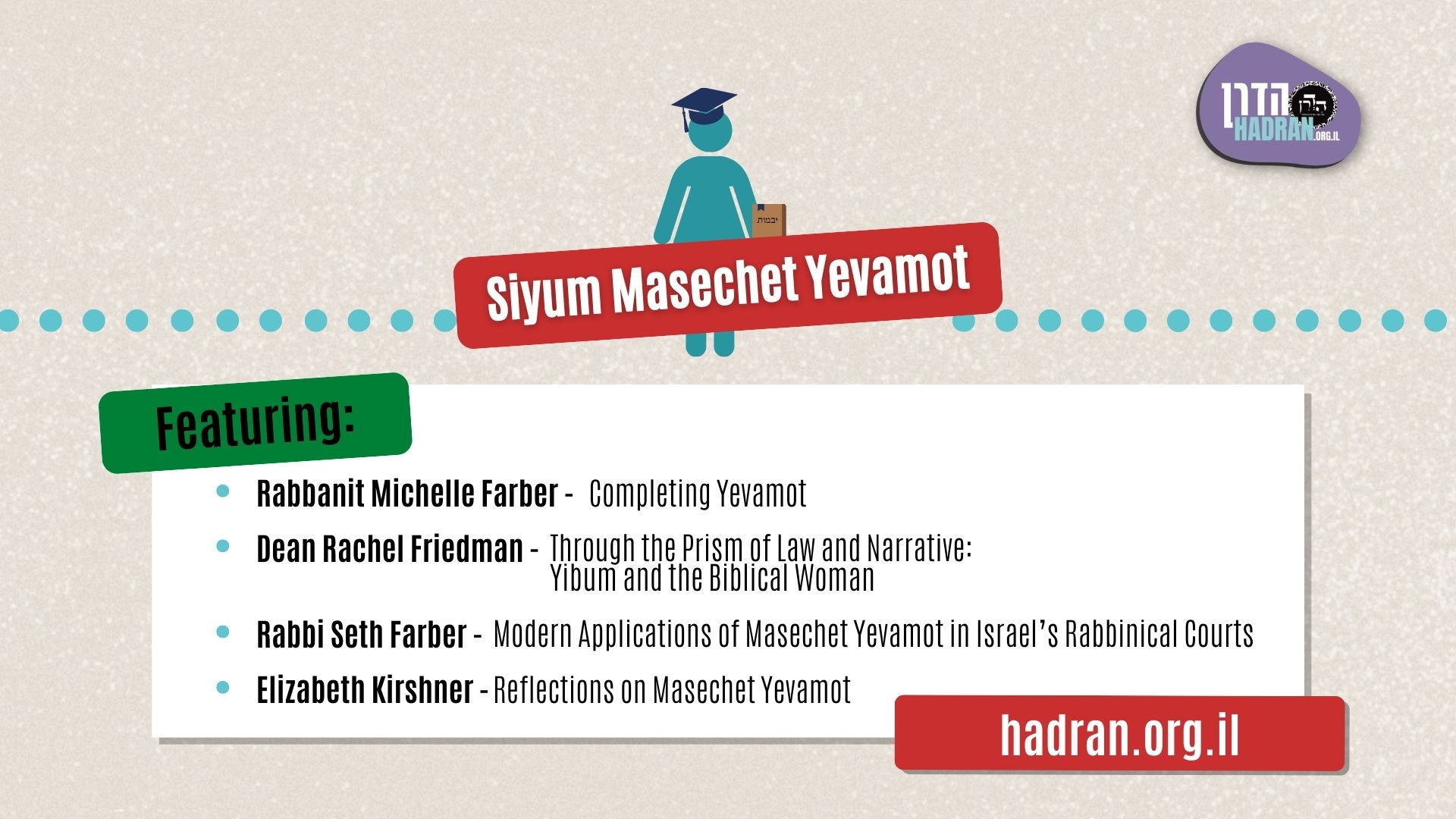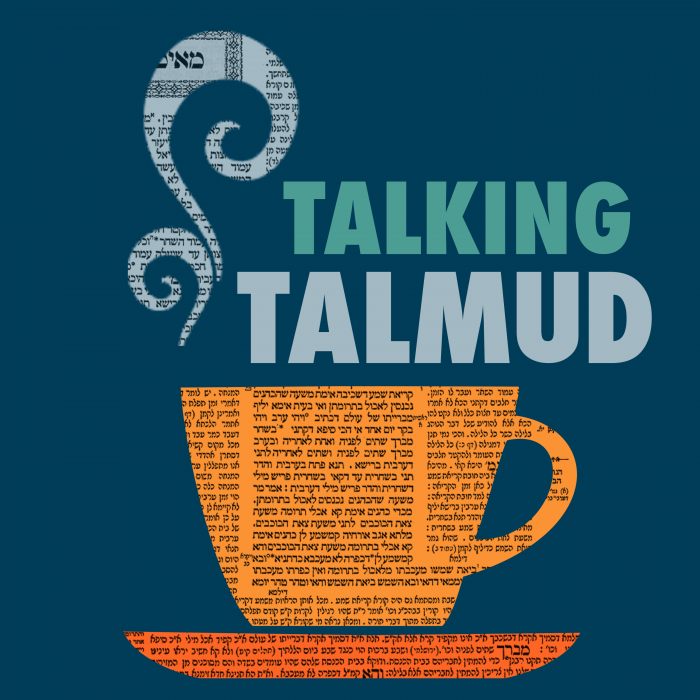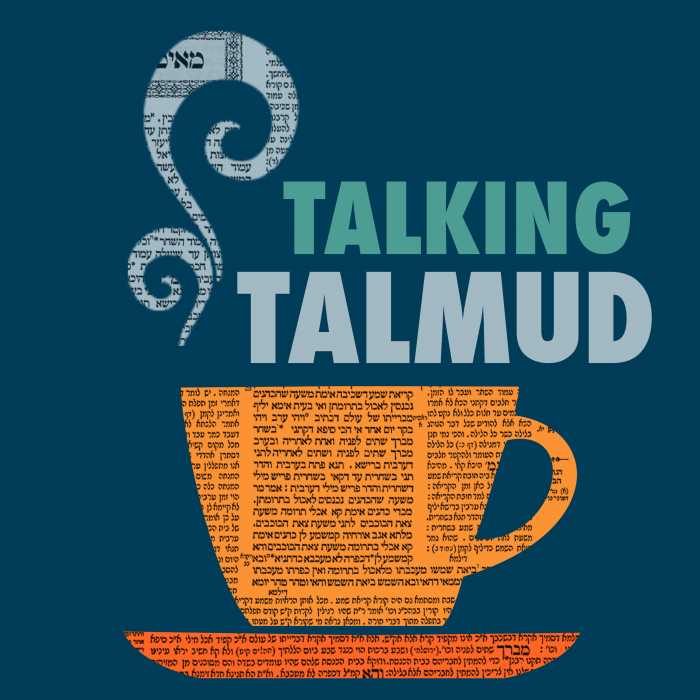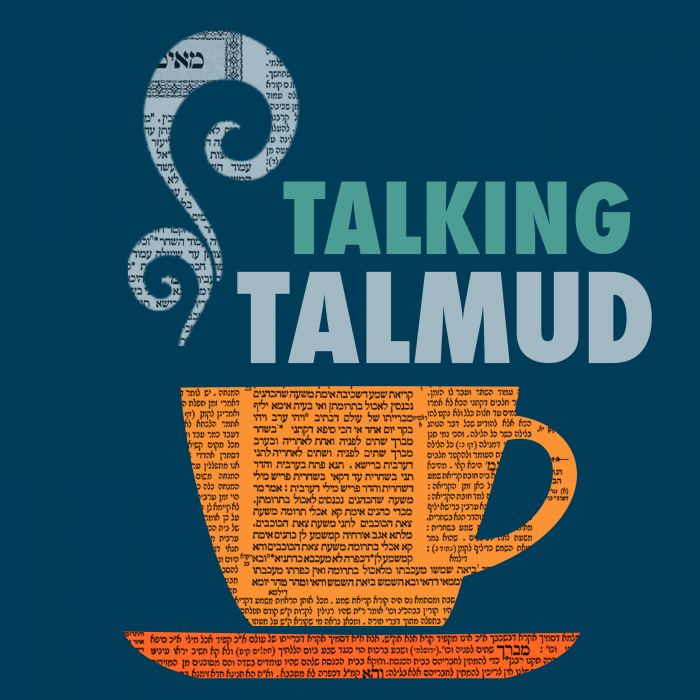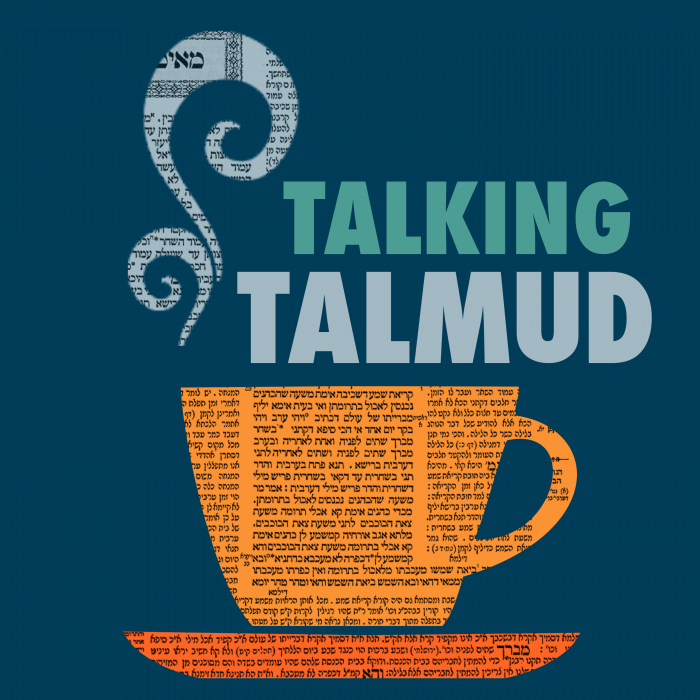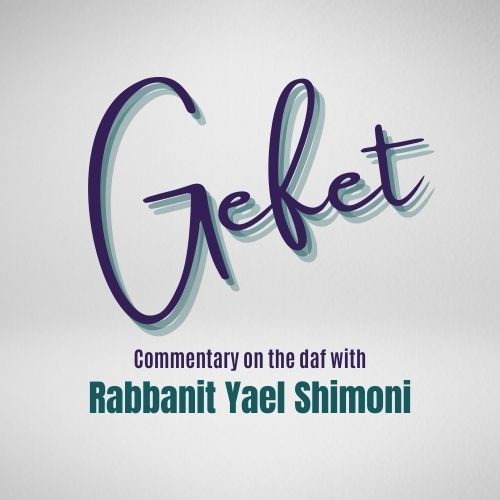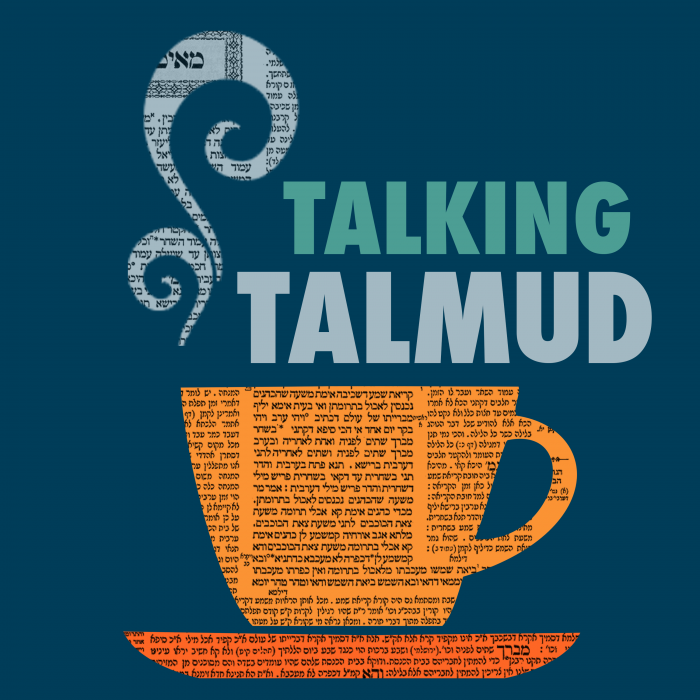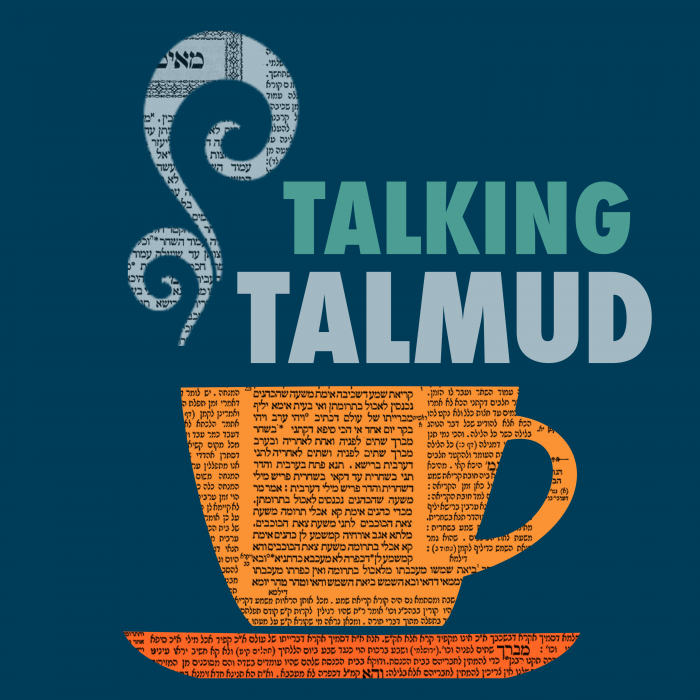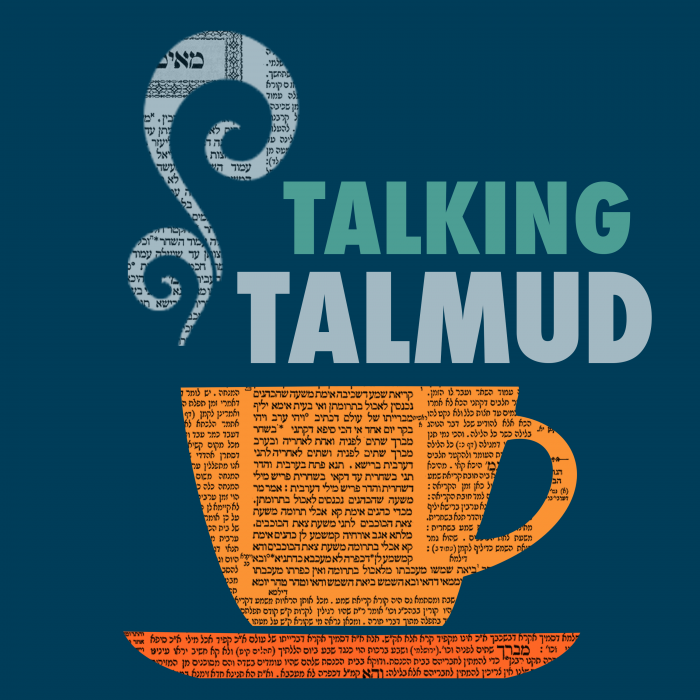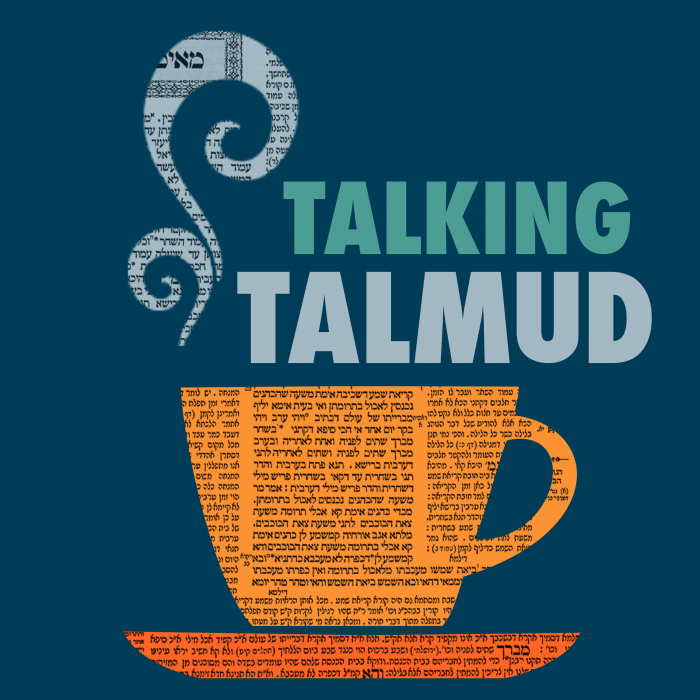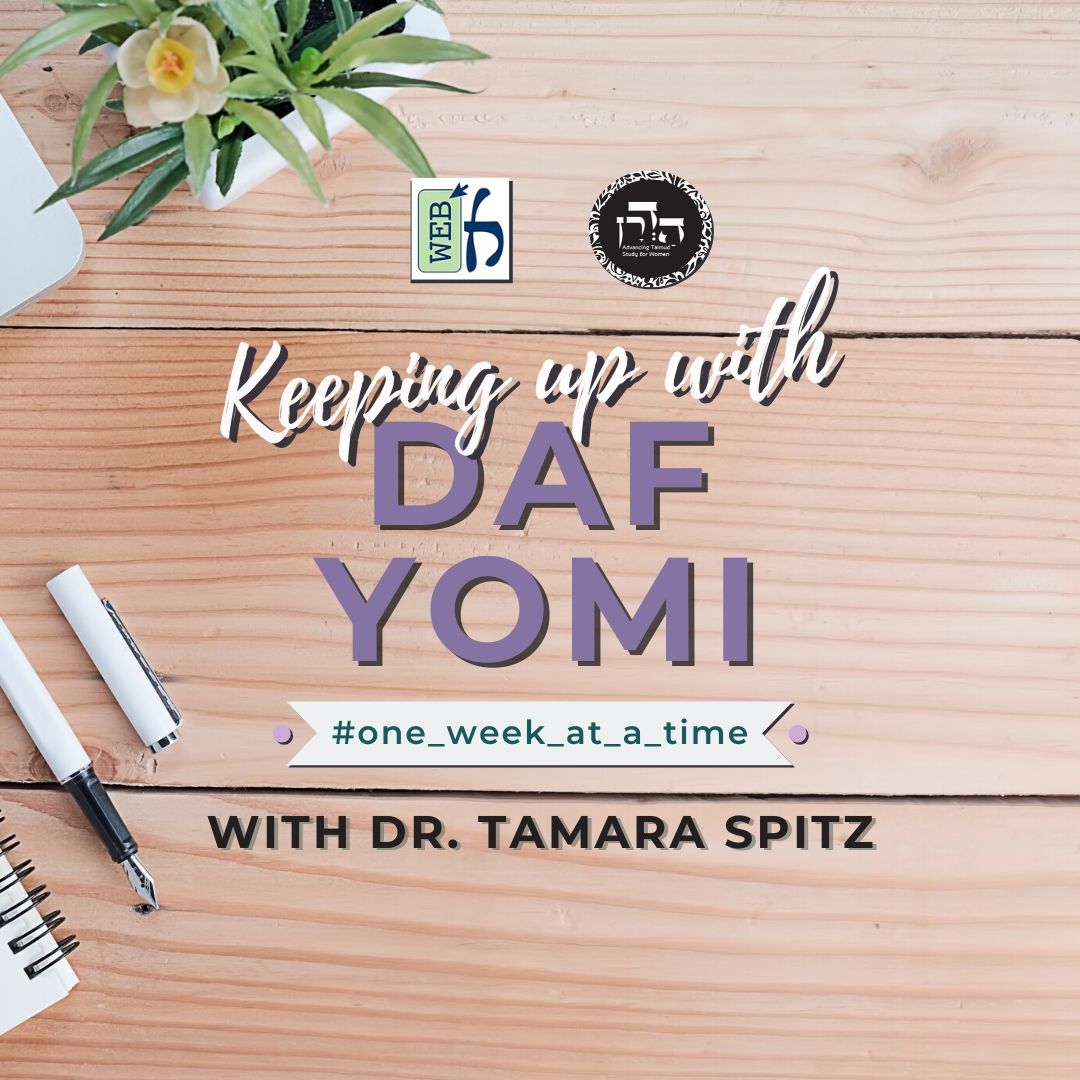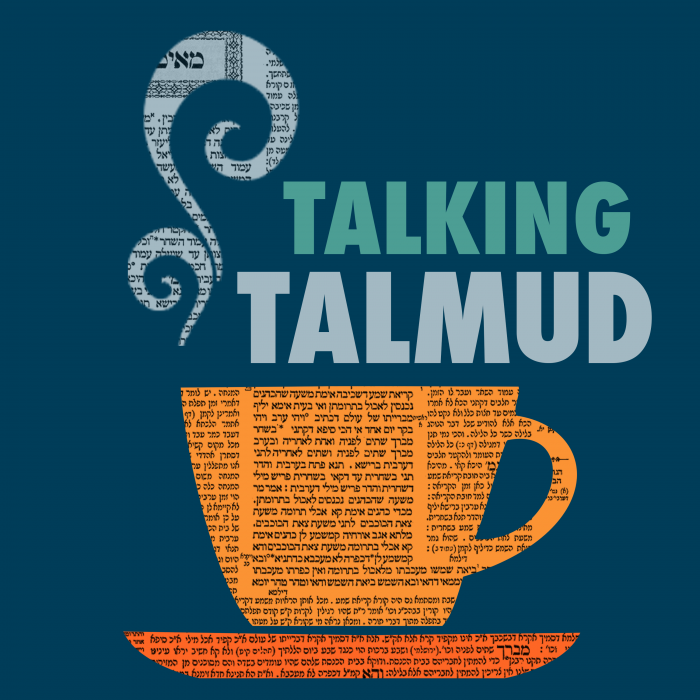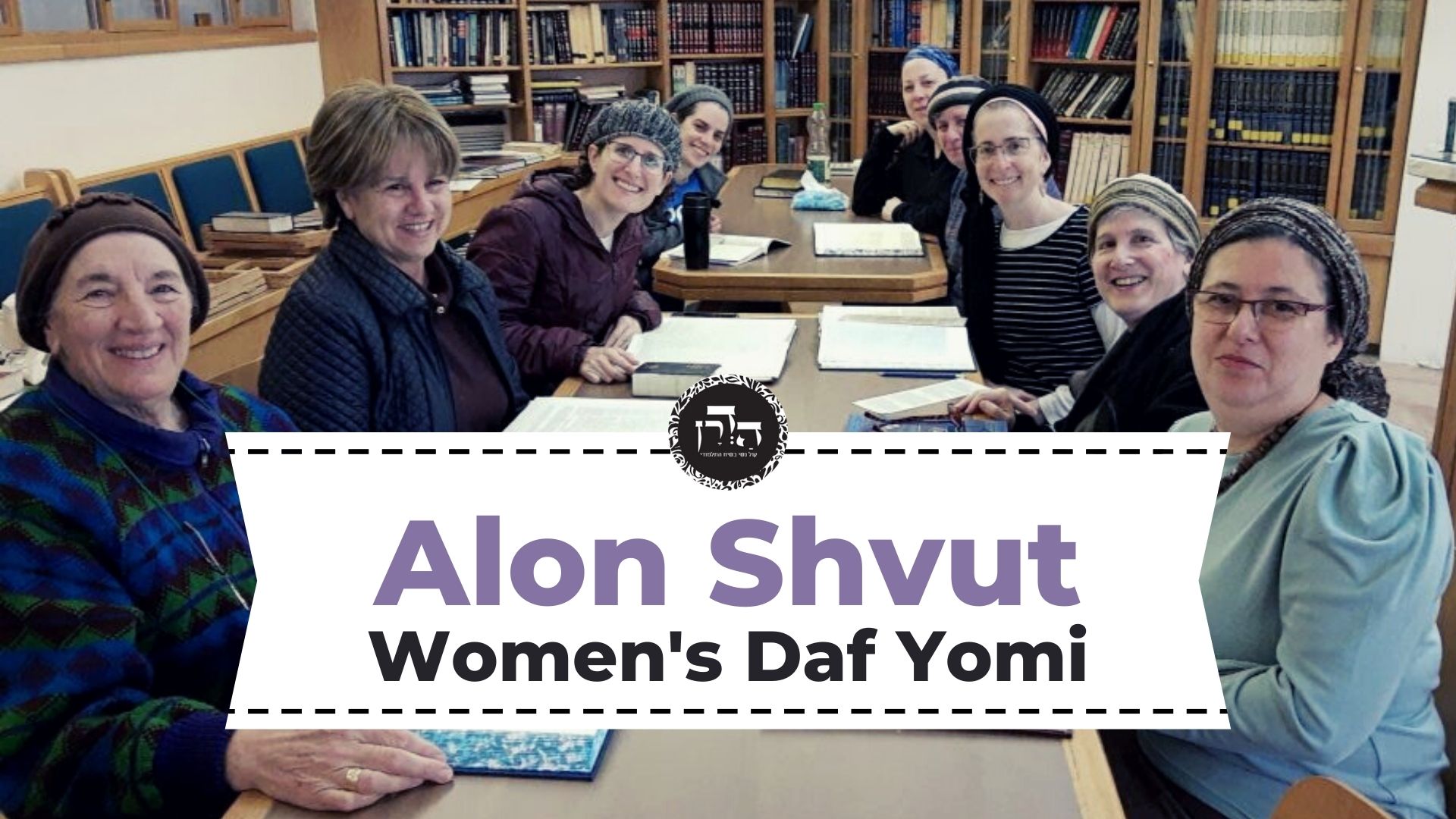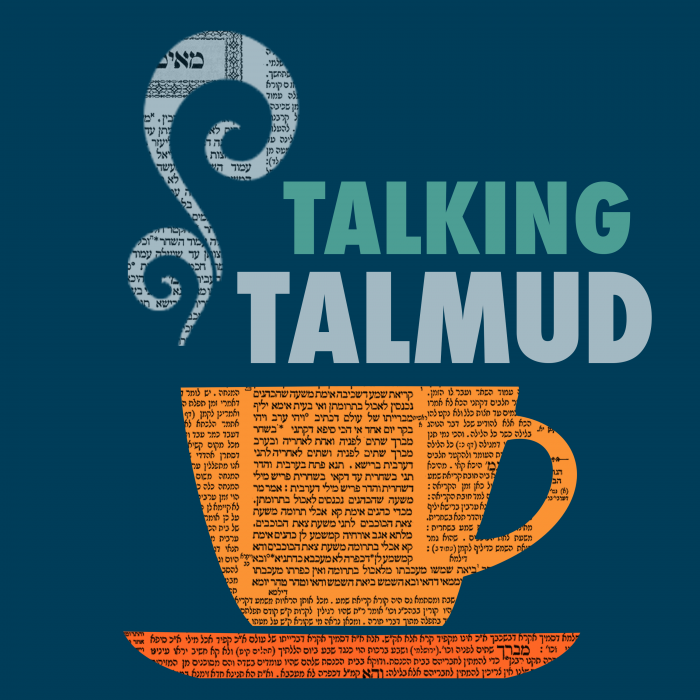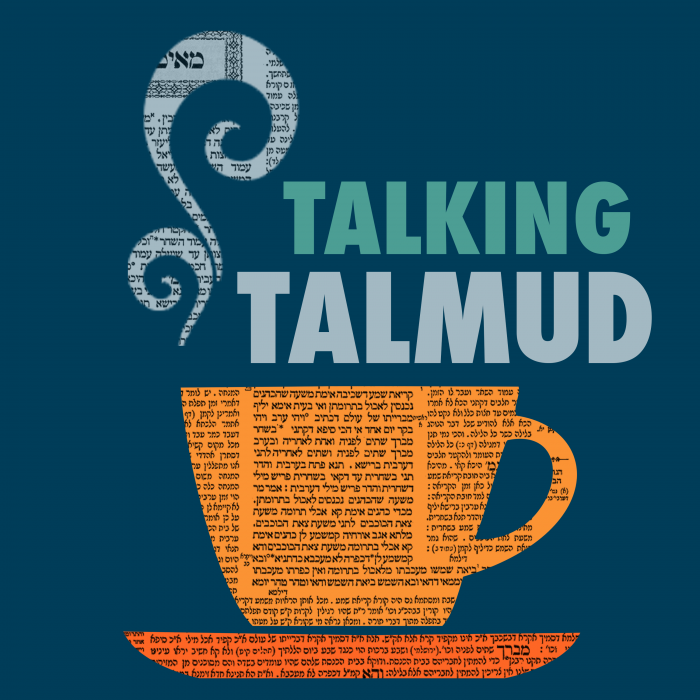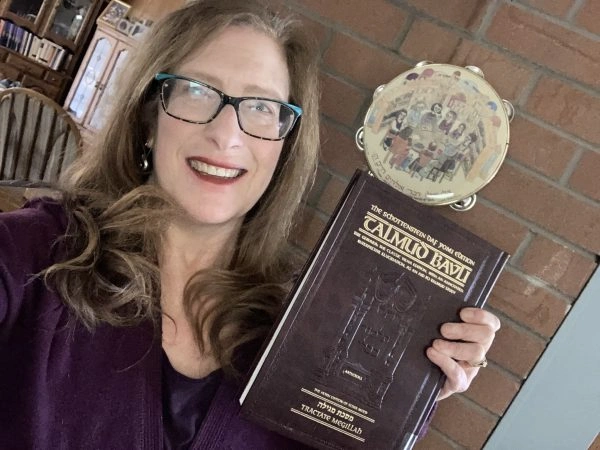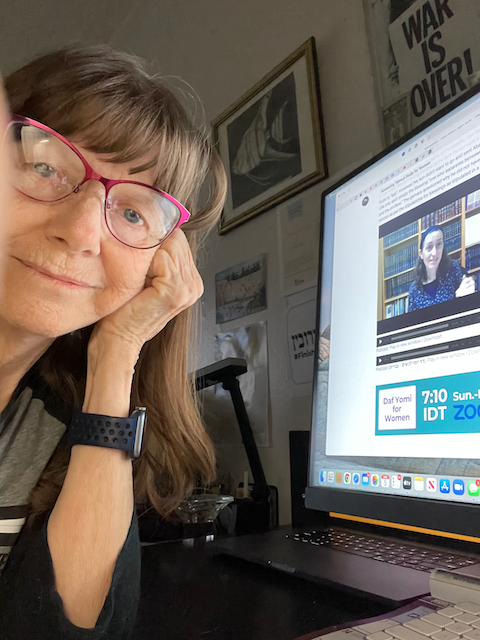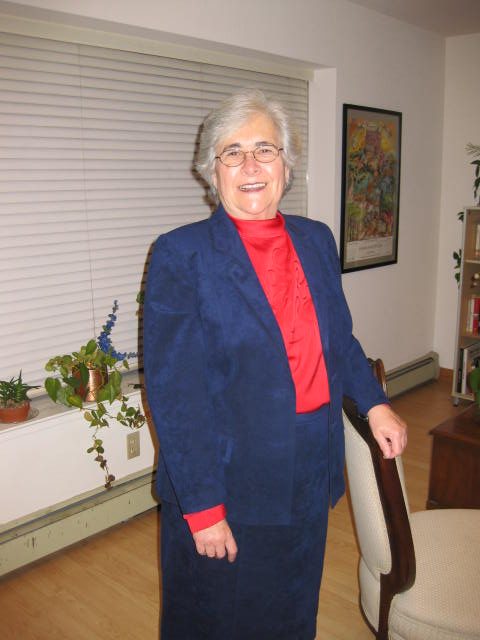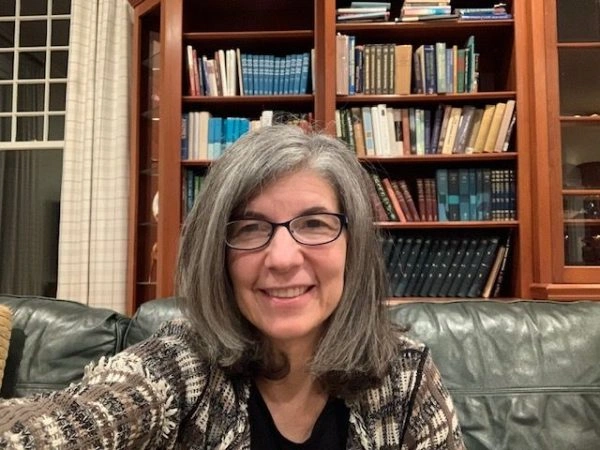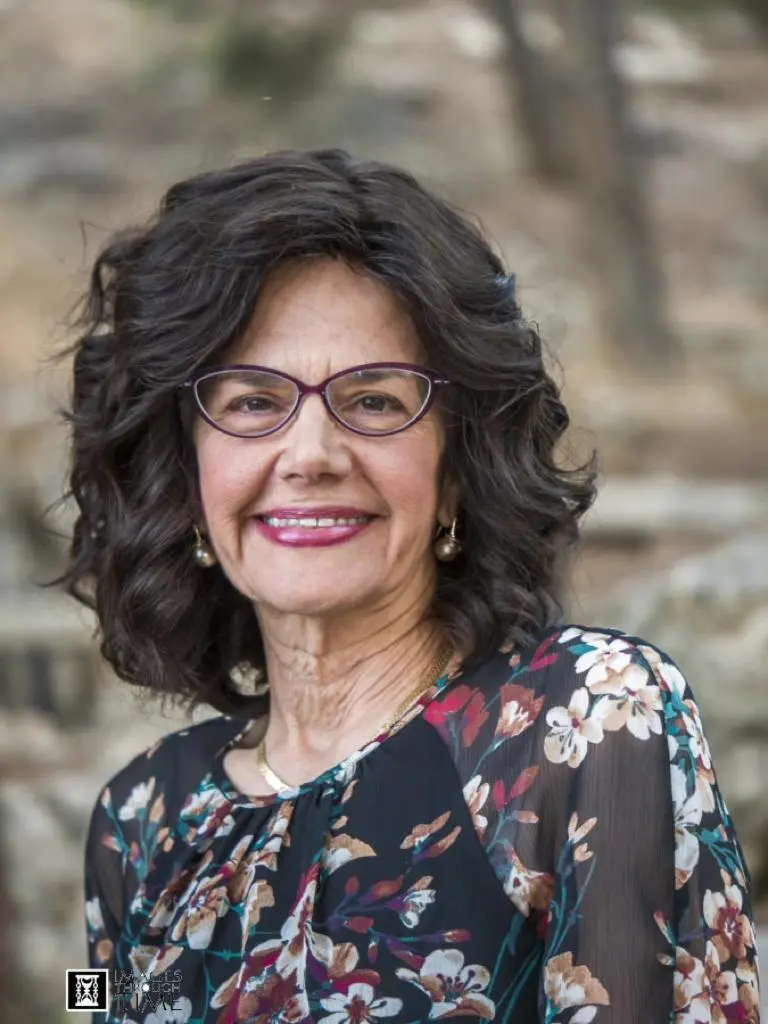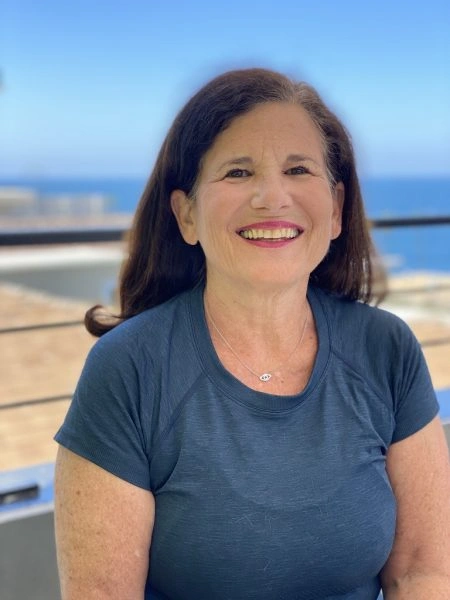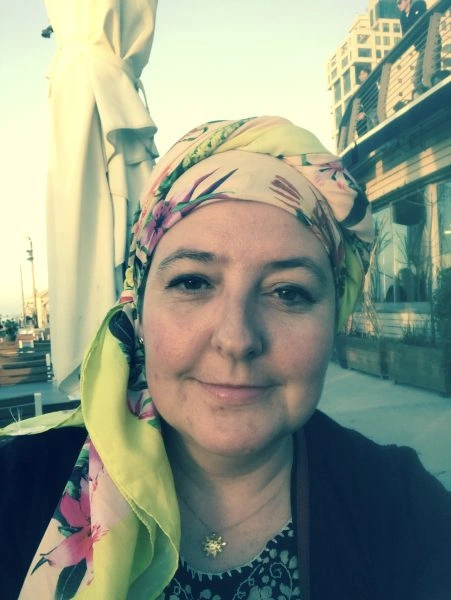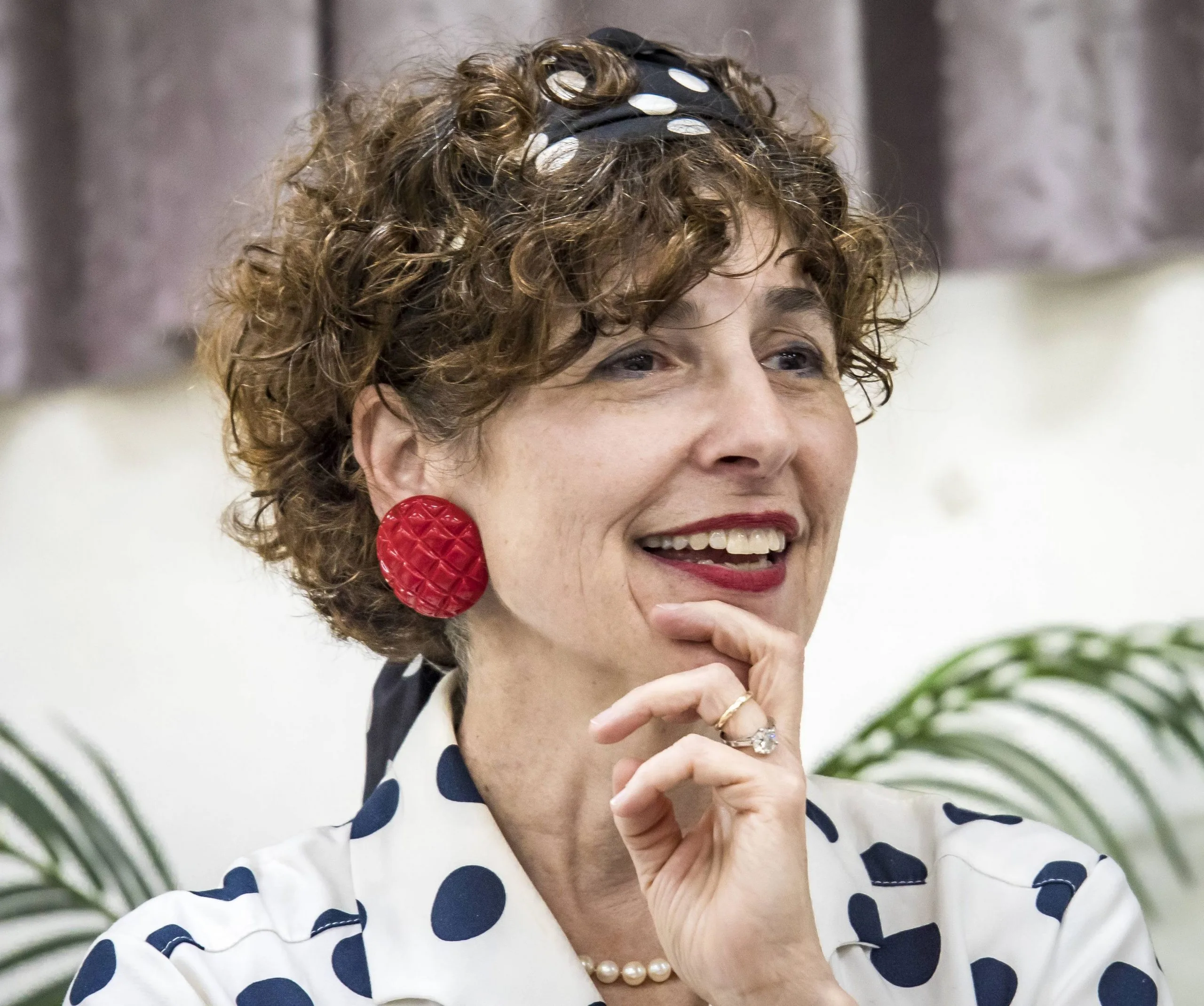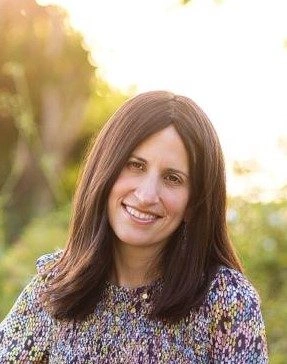OTher meal offerings – where were they prepared? What was the size of the lechem hapanim? The table? How did it fit? Where was the frame of the table situated? How does the location of it impact laws regarding purity/impurity?
This week’s learning is sponsored by Robert and Paula Cohen in loving memory of Joseph Cohen, Yosef ben Moshe HaCohen, z”l. “He was hard working, loved to sing, esp. as a chazan, and was very dedicated to his family and community.”
Want to dedicate learning? Get started here:


Today’s daily daf tools:
This week’s learning is sponsored by Robert and Paula Cohen in loving memory of Joseph Cohen, Yosef ben Moshe HaCohen, z”l. “He was hard working, loved to sing, esp. as a chazan, and was very dedicated to his family and community.”
Today’s daily daf tools:
Delve Deeper
Broaden your understanding of the topics on this daf with classes and podcasts from top women Talmud scholars.
New to Talmud?
Check out our resources designed to help you navigate a page of Talmud – and study at the pace, level and style that fits you.
The Hadran Women’s Tapestry
Meet the diverse women learning Gemara at Hadran and hear their stories.
Menachot 96
מְסוּכָּן הוּא. וְרַבִּי יְהוּדָה וְרַבִּי שִׁמְעוֹן בִּגְמָרָא פְּלִיגִי.
This is because he is, i.e., I am, dangerously ill, being utterly famished, and a non-priest may eat sacrificial food in a life-threatening situation. And with regard to Rabbi Yehuda and Rabbi Shimon, their dispute does not stem from the interpretation of the verses. Rather, they disagree with regard to a tradition, as they had divergent traditions as to whether or not the oven consecrates the shewbread.
דַּיְקָא נָמֵי, דְּקָתָנֵי: רַבִּי שִׁמְעוֹן אוֹמֵר: לְעוֹלָם הֱוֵי רָגִיל לוֹמַר שְׁתֵּי הַלֶּחֶם וְלֶחֶם הַפָּנִים כְּשֵׁרוֹת בַּעֲזָרָה וּכְשֵׁרוֹת אַבֵּית פָּאגֵי, שְׁמַע מִינַּהּ.
The language of the mishna is also precise, as it teaches that Rabbi Shimon says: One should always be accustomed to say that the two loaves and the shewbread are fit if they were prepared in the Temple courtyard and they are also fit if they were prepared in Beit Pagei. The term: One should always be accustomed to say, indicates that Rabbi Shimon’s opinion is based on an oral tradition and not on the interpretation of a verse. The Gemara concludes: One may conclude from the mishna that this is the case.
מַתְנִי׳ חֲבִיתֵּי כֹּהֵן גָּדוֹל – לִישָׁתָן וַעֲרִיכָתָן וַאֲפִיָּיתָן בִּפְנִים, וְדוֹחוֹת אֶת הַשַּׁבָּת. טְחִינָתָן וְהַרְקָדָתָן אֵינָן דּוֹחוֹת אֶת הַשַּׁבָּת. כְּלָל אָמַר רַבִּי עֲקִיבָא: כׇּל מְלָאכָה שֶׁאֶפְשָׁר לַעֲשׂוֹתָהּ מֵעֶרֶב שַׁבָּת – אֵינָהּ דּוֹחָה אֶת הַשַּׁבָּת, וְשֶׁאִי אֶפְשָׁר לָהּ לַעֲשׂוֹתָהּ מֵעֶרֶב שַׁבָּת – דּוֹחָה אֶת הַשַּׁבָּת.
MISHNA: With regard to the twelve loaves of the High Priest’s griddle-cake offering, of which six are offered in the morning and six in the evening, their kneading, the forming of their loaves, and their baking take place inside the Temple courtyard, and all types of labor involved in those actions override Shabbat. These labors cannot be performed prior to Shabbat, as once the loaves are consecrated in a service vessel they are disqualified if they are left overnight. Grinding their flour and sifting their flour do not override Shabbat. Rabbi Akiva stated a principle: Any labor that can be performed on Shabbat eve does not override Shabbat, but one that cannot be performed on Shabbat eve overrides Shabbat.
כׇּל הַמְּנָחוֹת – יֵשׁ בָּהֶן מַעֲשֵׂה כְלִי בִּפְנִים, וְאֵין בָּהֶן מַעֲשֵׂה כְלִי בַּחוּץ.
All preparatory procedures of the meal offerings that take place inside the Temple courtyard, e.g., kneading and forming the High Priest’s griddle cakes, involve the use of a service vessel that consecrates the offerings. But any preparatory procedures that take place outside the Temple courtyard, e.g., kneading and forming the two loaves and the shewbread, do not involve the use of a service vessel.
שְׁתֵּי הַלֶּחֶם – אׇרְכָּהּ שִׁבְעָה טְפָחִים, וְרׇחְבָּהּ אַרְבָּעָה טְפָחִים, וְקַרְנוֹתֶיהָ אַרְבַּע אֶצְבָּעוֹת. לֶחֶם הַפָּנִים – אׇרְכּוֹ עֲשָׂרָה טְפָחִים, וְרׇחְבּוֹ חֲמִשָּׁה טְפָחִים, וְקַרְנוֹתָיו שֶׁבַע אֶצְבָּעוֹת.
With regard to the two loaves, their length is seven handbreadths, their width is four handbreadths, and they have hornlike protrusions made of dough that is attached to each of their corners, which are four fingerbreadths high. With regard to the loaves of shewbread, their length is ten handbreadths, their width is five handbreadths, and each loaf’s hornlike protrusions is seven fingerbreadths high.
רַבִּי יְהוּדָה אוֹמֵר: שֶׁלֹּא תִּטְעֶה – זד״ד, יה״ז. בֶּן זוֹמָא אוֹמֵר: ״וְנָתַתָּ עַל הַשֻּׁלְחָן לֶחֶם פָּנִים לְפָנַי תָּמִיד״ – ״לֶחֶם פָּנִים״ שֶׁיְּהוּ לוֹ פָּנִים.
Rabbi Yehuda says: The following letters are a mnemonic so that you will not err and forget the dimensions of the two loaves: Zayin, dalet, dalet. The numerical value of the letter zayin is seven and the numerical value of the letter dalet is four. The mnemonic therefore represents the length of seven handbreadths, the width of four handbreadths, and the height of four fingerbreadths, respectively. The following letters are a mnemonic for the dimensions of the shewbread: Yod, heh, zayin, which stand for the length of ten handbreadths, the width of five handbreadths, and the height of seven fingerbreadths, respectively. Ben Zoma says that it is written: “And you shall set upon the Table shewbread [leḥem panim] before Me always” (Exodus 25:30). The term leḥem panim indicates that it should have vertical sides [panim] rather than a rounded shape.
הַשּׁוּלְחָן – אׇרְכּוֹ עֲשָׂרָה, וְרׇחְבּוֹ חֲמִשָּׁה; לֶחֶם הַפָּנִים – אׇרְכּוֹ עֲשָׂרָה, וְרׇחְבּוֹ חֲמִשָּׁה.
As for the Table, its length is ten handbreadths and its width is five handbreadths, as the Torah states that the Table is two cubits long and one cubit wide (see Exodus 25:23), and Rabbi Yehuda holds that the cubit used as the unit of measurement for the construction of the Temple vessels was equal to five handbreadths. With regard to the shewbread, its length is ten handbreadths and its width is five handbreadths.
נוֹתֵן אׇרְכּוֹ כְּנֶגֶד רׇחְבּוֹ שֶׁל שׁוּלְחָן, וְכוֹפֵל טִפְחַיִים וּמֶחֱצָה מִכָּאן וְטִפְחַיִים וּמֶחֱצָה מִכָּאן, נִמְצָא אׇרְכּוֹ מְמַלֵּא רׇחְבּוֹ שֶׁל שׁוּלְחָן, דִּבְרֵי רַבִּי יְהוּדָה.
The priest places the length of the two shewbread arrangements across the width of the Table, which leaves five handbreadths of each loaf protruding from the Table. And he folds the protruding two and a half handbreadths upward on this side of the Table, and the protruding two and a half handbreadths upward on that side of the Table. One finds, therefore, that the length of the shewbread covers the width of the Table. Similarly, since the width of each loaf is five handbreadths, the width of the two loaves filled the entire length of the Table. This is the statement of Rabbi Yehuda.
רַבִּי מֵאִיר אוֹמֵר: הַשֻּׁלְחָן – אׇרְכּוֹ שְׁנֵים עָשָׂר, וְרׇחְבּוֹ שִׁשָּׁה; לֶחֶם הַפָּנִים – אׇרְכּוֹ עֲשָׂרָה, וְרׇחְבּוֹ חֲמִשָּׁה.
Rabbi Meir says: With regard to the Table, its length is twelve handbreadths and its width is six handbreadths, as the measure of a cubit used in the construction of the Temple vessels was equal to six handbreadths. Concerning the shewbread, its length is ten handbreadths and its width is five handbreadths.
נוֹתֵן אׇרְכּוֹ כְּנֶגֶד רׇחְבּוֹ שֶׁל שׁוּלְחָן, כּוֹפֵל טִפְחַיִים מִכָּאן וְטִפְחַיִים מִכָּאן, וְטִפְחַיִים רֶיוַח בָּאֶמְצַע, כְּדֵי שֶׁתְּהֵא הָרוּחַ מְנַשֶּׁבֶת בָּהֶם.
Rabbi Meir continues: The priest places the length of the shewbread across the width of the Table, which leaves four handbreadths of each loaf protruding from the Table. He folds the protruding two handbreadths upward on this side of the Table, and the protruding two handbreadths upward on that side of the Table. The width of the two arrangements of shewbread occupies only ten of the twelve handbreadths of the length of the Table, and this leaves a space of two handbreadths in the middle, between the two arrangements, so that the wind will blow between them and prevent the loaves from becoming moldy.
אַבָּא שָׁאוּל אוֹמֵר: שָׁם הָיוּ נוֹתְנִין שְׁנֵי בְּזִיכֵי לְבוֹנָה שֶׁל לֶחֶם הַפָּנִים. אָמְרוּ לוֹ: וַהֲרֵי כְּבָר נֶאֱמַר ״וְנָתַתָּ עַל הַמַּעֲרֶכֶת לְבֹנָה זַכָּה״! אָמַר לָהֶם: הֲרֵי כְּבָר נֶאֱמַר ״וְעָלָיו מַטֵּה מְנַשֶּׁה״.
Abba Shaul says: There, in the space between the two arrangements, the priests would place the two bowls of frankincense that accompany the shewbread. The Sages said to him: But isn’t it already stated: “And you shall place pure frankincense upon [al] each arrangement, that it may be for the bread as a memorial part, an offering made by fire to the Lord” (Leviticus 24:7)? The verse indicates that the frankincense is placed upon the shewbread and not next to it. Abba Shaul said to the Sages in response: Isn’t it already stated: “And next to him [alav] shall be the tribe of Manasseh” (Numbers 2:20)? Just as the preposition “alav” in this verse means that the tribe of Manasseh pitched camp next to the tribe of Ephraim and not upon it, so too, the preposition “al” means that the frankincense was placed next to the arrangements of the shewbread.
וְאַרְבָּעָה סְנִיפִין שֶׁל זָהָב הָיוּ שָׁם, מְפוּצָּלִין מֵרָאשֵׁיהֶן, שֶׁהָיוּ סוֹמְכִין בָּהֶם, שְׁנַיִם לְסֵדֶר זֶה וּשְׁנַיִם לְסֵדֶר זֶה, וְעֶשְׂרִים וּשְׁמוֹנָה קָנִים כַּחֲצִי קָנֶה חָלוּל, אַרְבָּעָה עָשָׂר לְסֵדֶר זֶה וְאַרְבָּעָה עָשָׂר לְסֵדֶר זֶה.
The mishna continues to describe the shewbread Table: And there were four panels of gold there, which stood on the ground and rose above the height of the Table, and they split up at their upper ends, above the Table, so that the rods upon which the shewbread was placed could rest upon the panels. In this manner the panels would support the shewbread. There were two panels for this arrangement and two panels for that arrangement, and there were twenty-eight rods, each of which was shaped like half of a hollow reed. There were fourteen rods for this arrangement and fourteen rods for that arrangement.
לֹא סִידּוּר קָנִים וְלֹא נְטִילָתָם דּוֹחָה אֶת הַשַּׁבָּת, אֶלָּא נִכְנָס מֵעֶרֶב שַׁבָּת, וְשׁוֹמְטוֹ, וְנוֹתְנוֹ לְאׇרְכּוֹ שֶׁל שֻׁלְחָן.
Neither the arranging of the rods for the new shewbread, nor their removal from the arrangement of the old shewbread, overrides Shabbat. Rather, a priest enters the Sanctuary on Shabbat eve, i.e., Friday before sundown, and removes each of the rods from between the loaves. And according to Rabbi Meir he then places each rod in the space between the two arrangements, along the length of the Table. Then, on Shabbat, he places the new shewbread on the Table without the rods, and he inserts the rods between the loaves at the conclusion of Shabbat.
כׇּל הַכֵּלִים שֶׁהָיוּ בַּמִּקְדָּשׁ, אׇרְכָּן לְאׇרְכּוֹ שֶׁל בֵּית.
The mishna concludes: All the vessels that were in the Temple, including the Table, were placed so that their length was from east to west, along the length of the Temple.
גְּמָ׳ כׇּל הַמְּנָחוֹת יֵשׁ בָּהֶן מַעֲשֵׂה כְלִי מִבִּפְנִים. שָׁאֲלוּ אֶת רַבִּי: זוֹ מִנַּיִן? אָמַר לָהֶם: הֲרֵי הוּא אוֹמֵר ״וַיֹּאמֶר אֵלַי זֶה הַמָּקוֹם אֲשֶׁר יְבַשְּׁלוּ שָׁם הַכֹּהֲנִים אֶת הַחַטָּאת וְאֶת הָאָשָׁם אֲשֶׁר יֹאפוּ אֶת הַמִּנְחָה לְבִלְתִּי הוֹצִיא אֶל הֶחָצֵר הַחִיצוֹנָה״.
GEMARA: The mishna teaches that all preparatory procedures of the meal offerings that take place inside the Temple courtyard involve the use of a service vessel that consecrates the offerings. The Sages asked Rabbi Yehuda HaNasi: From where is this halakha derived? Rabbi Yehuda HaNasi said to them: Doesn’t the verse state: “And he said to me: This is the place where the priests shall cook the guilt offering and the sin offering, where they shall bake the meal offering; that they do not bring them out to the outer courtyard, to sanctify the people” (Ezekiel 46:20)? Cooking the meat of the guilt offering and the sin offering requires the use of a vessel, and the verse indicates that this must be performed inside the Temple courtyard, as the meat may not be brought to the outer courtyard.
מִנְחָה דּוּמְיָא דְּאָשָׁם וְחַטָּאת, מָה אָשָׁם וְחַטָּאת טְעוּנִין כְּלִי, אַף מִנְחָה נָמֵי טְעוּנָה כְּלִי.
Rabbi Yehuda HaNasi explains: The verse compares the meal offering to the guilt offering and the sin offering, indicating that the halakha of the meal offering is similar to the halakha of the guilt offering and the sin offering. Just as the guilt offering and the sin offering require the use of a service vessel in order to cook the sacrificial meat, and this is performed inside the Temple courtyard, so too, the meal offering also requires a service vessel for its preparation, which is performed inside the Temple courtyard.
הַשּׁוּלְחָן, אׇרְכּוֹ עֲשָׂרָה.
§ The mishna cites the opinion of Rabbi Yehuda: As for the Table, its length is ten handbreadths and its width is five handbreadths. Five handbreadths of each loaf of the shewbread, each of which is bent upward, protrude from the Table; two and a half handbreadths on each side. Rabbi Meir holds that the width of the Table is six handbreadths. Therefore, only four handbreadths of each loaf protrude from the Table and two handbreadths are bent upward on each side.
אָמַר רַבִּי יוֹחָנָן: לְדִבְרֵי הָאוֹמֵר טִפְחַיִים וּמֶחֱצָה כּוֹפֵל – נִמְצָא שֻׁלְחָן מְקַדֵּשׁ חֲמִשָּׁה עָשָׂר טְפָחִים לְמַעְלָה. לְדִבְרֵי הָאוֹמֵר טִפְחַיִם כּוֹפֵל – נִמְצָא שֻׁלְחָן מְקַדֵּשׁ שְׁנֵים עָשָׂר טְפָחִים לְמַעְלָה.
Rabbi Yoḥanan says: According to the statement of the one who says that one folds up two and a half handbreadths from each side of the loaves, it emerges that the Table consecrates fifteen handbreadths above it, as there were six loaves on each side of the Table, which were each two and a half handbreadths high. And according to the statement of the one who says that one folds up two handbreadths from each side of the loaves, it emerges that the Table consecrates twelve handbreadths above it.
וְהָאִיכָּא קָנִים? קָנִים שַׁקּוֹעֵי מְשַׁקַּע לְהוּ.
The Gemara asks: But aren’t there rods between the loaves? The total height of the arrangements should therefore be more than fifteen handbreadths according to Rabbi Yehuda, and more than twelve handbreadths according to Rabbi Meir. The Gemara answers that the rods did not add to the height of the arrangement, as the loaves were shaped with indentations so that the rods were embedded in them.
מַאי טַעְמָא? מִשּׁוּם אִיעַפּוֹשֵׁי לֶחֶם. סוֹף סוֹף קָא מִיעַפַּשׁ לֶחֶם! דְּמַגְבַּהּ לֵיהּ פּוּרְתָּא.
The Gemara asks: What is the reason that the rods are required? They are required because the bread is apt to become moldy. The rods prevent this by enabling the air to circulate between the loaves. But if the rods are sunk into the loaves, ultimately the bread will become moldy. The Gemara answers that the priest would raise the rods slightly above the loaves. The rods were not completely embedded in the loaves, and there was a small gap between the loaves that enabled the air to circulate.
וְהָאִיכָּא הָהוּא פּוּרְתָּא? כֵּיוָן דְּלָא הָוֵי טֶפַח, לָא חָשֵׁיב לֵיהּ.
The Gemara asks: But if so, isn’t there that slight gap between each of the six loaves, causing the total height of each arrangement to be more than fifteen or twelve handbreadths? The Gemara answers: Since the gaps did not amount to a single handbreadth, Rabbi Yoḥanan did not count them.
וְהָאִיכָּא בָּזִיכִין! בְּגַוֵּויהּ דְּלֶחֶם הֲווֹ יָתְבִי, וּלְבַהֲדֵי לֶחֶם הֲווֹ קָיְימִי. וְהָאִיכָּא קְרָנוֹת! קְרָנוֹת לְגַוֵּויהּ דְּלֶחֶם כָּיֵיף לְהוּ, וְלֶחֶם עֲלַיְיהוּ נָח לֵיהּ!
The Gemara asks: But aren’t there also the bowls of frankincense that are placed above the arrangements, adding to the total height of the items consecrated by the Table? The Gemara answers: The bowls of frankincense would rest inside the middle of the bread and consequently their height corresponded with that of the bread. The Gemara asks: But aren’t there the hornlike protrusions of the shewbread, which are seven fingerbreadths in height? These protrusions should be added to the total height of the arrangements. The Gemara answers: With regard to the protrusions, the priest would fold them into the bread, and the loaf of bread above rested upon them. The protrusions therefore did not increase the height of the arrangements.
וְהָאִיכָּא מִסְגַּרְתּוֹ!
The Gemara asks: But isn’t there the Table’s decorated frame, which ran around its perimeter and was one handbreadth wide, as the verse states: “And you shall make for it a frame of a handbreadth” (Exodus 25:25)? Since the arrangements are placed on the Table’s frame, they rise one additional handbreadth above the Table.
כְּמַאן דְּאָמַר מִסְגַּרְתּוֹ לְמַטָּה הָיְתָה, וּלְמַאן דְּאָמַר מִסְגַּרְתּוֹ לְמַעְלָה הָיְתָה – פַּרְקוֹדֵי הֲוָה מְפַרְקְדָא, וְלֶחֶם בְּגַוֵּיהּ דְּשֻׁלְחָן הֲוָה יָתֵיב.
The Gemara answers: Rabbi Yoḥanan’s statement is in accordance with the opinion of the one who said the Table’s frame was not above the Table’s surface but below it, and therefore it did not add any height to the arrangements on the Table. And furthermore, even according to the one who said the Table’s frame was above the Table’s surface, it did not add to the height of the arrangements. This is because the frame was tilted outward, but the bread was set within the area of the Table’s surface.
כִּדְתַנְיָא, רַבִּי יוֹסֵי אוֹמֵר: לֹא הָיָה שָׁם סְנִיפִין, אֶלָּא מִסְגַּרְתּוֹ שֶׁל שֻׁלְחָן מַעֲמֶדֶת אֶת הַלֶּחֶם. אָמְרוּ לוֹ: מִסְגַּרְתּוֹ לְמַטָּה הָיְתָה.
The Gemara cites the dispute with regard to the location of the frame: As it is taught in a baraita: Rabbi Yosei says: There were no panels there at all, as they were not required in order to support the loaves. Rather, the Table’s frame supported the bread, as the frame was above the Table’s surface. The Rabbis said to Rabbi Yosei: The Table’s frame was below the Table’s surface, and therefore the panels were required to support the loaves.
אָמַר רַבִּי יוֹחָנָן: לְדִבְרֵי הָאוֹמֵר מִסְגַּרְתּוֹ לְמַטָּה הָיְתָה, טַבְלָא הַמִּתְהַפֶּכֶת טְמֵאָה.
§ Rabbi Yoḥanan says: According to the statement of the one who says that the Table’s frame was below the Table’s surface, the surface was merely a flat board. It is a halakhic principle with regard to wooden utensils that only rounded utensils are susceptible to ritual impurity, but not flat utensils. It is known that the shewbread Table was susceptible to impurity. One may therefore infer from this that a flat board is susceptible to impurity, provided that it can be turned over and used on both sides. This is because the wide surface of the board renders it functionally similar to a concave receptacle.
לְדִבְרֵי הָאוֹמֵר מִסְגַּרְתּוֹ לְמַעְלָה הָיְתָה, טַבְלָא הַמִּתְהַפֶּכֶת תִּיבְּעֵי לָךְ.
Rabbi Yoḥanan continues: According to the statement of the one who says that the Table’s frame was above the Table’s surface, the Table served as a receptacle. One therefore cannot infer the halakha with regard to a flat board that can be turned over from the case of the Table, and you must still raise the dilemma as to whether it is susceptible to ritual impurity.
מִכְּלָל דְּשֻׁלְחָן בַּר קַבּוֹלֵי טוּמְאָה הוּא? כְּלִי עֵץ הֶעָשׂוּי לְנַחַת הוּא, וְכׇל כְּלִי עֵץ הֶעָשׂוּי לְנַחַת – אֵין מְקַבֵּל טוּמְאָה.
The Gemara asks: One can conclude by inference from Rabbi Yoḥanan’s statement that the Table is susceptible to ritual impurity. But it is a wooden vessel designated to rest in a fixed place, and any wooden vessel that is designated to rest in a fixed place is not susceptible to impurity.
מַאי טַעְמָא? דּוּמְיָא דְּשַׂק בָּעֵינַן – מָה שַׂק מִטַּלְטֵל מָלֵא וְרֵיקָן, אַף כֹּל מִטַּלְטֵל מָלֵא וְרֵיקָן.
The Gemara explains: What is the reason for this halakha? The verse states with regard to items that are rendered impure by the carcasses of creeping animals: “And anything upon which any of them fall when they are dead shall be impure, whether it is any vessel of wood, or cloth, or leather, or sack” (Leviticus 11:32). The verse juxtaposes wooden vessels with sacks, indicating that we require a wooden vessel to be similar to a sack in order to be susceptible to ritual impurity. Just as a sack is carried both when it is full and when it is empty, so too, any wooden vessel that is carried both full and empty is susceptible to impurity. Since the Table is designated to rest in a fixed place and not to be carried, it should not be susceptible to impurity.
שֻׁלְחָן נָמֵי מִטַּלְטֵל מָלֵא וְרֵיקָן, כִּדְרֵישׁ לָקִישׁ, דְּאָמַר רֵישׁ לָקִישׁ: מַאי דִּכְתִיב ״עַל הַשֻּׁלְחָן הַטָּהוֹר״? ״טָהוֹר״ – מִכְּלָל דְּאִיכָּא טָמֵא!
The Gemara answers: The Table is also carried both full and empty, i.e., even when the shewbread is upon it, in accordance with the statement of Reish Lakish. This is as Reish Lakish said: What is the meaning of that which is written: “And you shall set them in two arrangements, six in an arrangement, upon the pure Table before the Lord” (Leviticus 24:6)? The term “the pure Table” teaches by inference that there is a case where the Table becomes impure, and therefore the Torah states that the Table must be pure when the shewbread is set upon it. This conclusion is difficult, as the principle that a wooden vessel designated to rest in a fixed place is not susceptible to impurity indicates that the Table should not be susceptible to impurity.
אֶלָּא, מְלַמֵּד שֶׁמַּגְבִּיהִין אוֹתוֹ לְעוֹלֵי רְגָלִים, וּמַרְאִין בּוֹ לֶחֶם, וְאוֹמְרִים לָהֶם: רְאוּ חִיבַּתְכֶם לִפְנֵי הַמָּקוֹם!
Rather, the verse teaches that the priests would lift the Table with its shewbread to display the shewbread to the pilgrims standing in the Temple courtyard, and a priest would say to them: See how beloved you are before, i.e., in the eyes of, the Omnipresent, Who constantly performs a miracle with regard to the shewbread. For this reason, the Table is susceptible to ritual impurity.
כְּדִבְרֵי רַבִּי יְהוֹשֻׁעַ בֶּן לֵוִי, דְּאָמַר רַבִּי יְהוֹשֻׁעַ בֶּן לֵוִי: נֵס גָּדוֹל נַעֲשָׂה בְּלֶחֶם הַפָּנִים, סִילּוּקוֹ כְּסִידּוּרוֹ, שֶׁנֶּאֱמַר: ״לָשׂוּם לֶחֶם חֹם בְּיוֹם הִלָּקְחוֹ״.
This is in accordance with the statement of Rabbi Yehoshua ben Levi, as Rabbi Yehoshua ben Levi said: A great miracle was performed with the shewbread: Its condition at the time of its removal from the Table, after having been left there for a week, was like its condition at the time of its arrangement on the Table; as it is stated: “To place hot bread on the day when it was taken away” (I Samuel 21:7), indicating that it was as hot on the day of its removal as it was on the day when it was placed on the Table.
וְתִיפּוֹק לִי מִשּׁוּם צִיפּוּי? מִי לָא תְּנַן: הַשֻּׁלְחָן וְהַדּוּלְבָּקִי שֶׁנִּפְחֲתוּ, אוֹ שֶׁחִיפָּן בְּשַׁיִישׁ, וְשִׁיֵּיר בָּהֶן מְקוֹם הַנָּחַת כּוֹסוֹת – טְמֵאִין. רַבִּי יְהוּדָה אוֹמֵר: מְקוֹם הַנָּחַת חֲתִיכוֹת.
The Gemara asks: But why is it necessary to derive that the Table is susceptible to impurity due to the fact that it is not designated to rest in a fixed place? I may derive that it is susceptible to impurity due to its gold covering. Didn’t we learn in a mishna (Kelim 22:1): Consider the case of the table and the dulbeki, a small table upon which the food and drink are placed before being served at the dining table, that were partially broken, or that one covered with marble stone, which is not susceptible to impurity. If an area of their surface large enough for placing cups there was left unbroken or uncovered with marble they remain susceptible to impurity. Rabbi Yehuda says: The remaining surface area must be large enough for placing pieces of meat and bread as well.
שִׁיֵּיר – אִין, לֹא שִׁיֵּיר – לָא.
One can infer from the mishna that if one left part of the surface area of the table without covering it with marble, yes, it remains susceptible to impurity. But if he did not leave part of the table without covering it with marble it is not susceptible to impurity. Evidently, the status of a vessel is determined according to the material of its external covering and not according to its main material. Consequently, since the shewbread Table was covered with gold it should have the status of a metal vessel, which is susceptible to ritual impurity even if it is designated to rest in a fixed place.
וְכִי תֵּימָא, כָּאן בְּצִיפּוּי עוֹמֵד, כָּאן בְּצִיפּוּי שֶׁאֵינוֹ עוֹמֵד, וְהָא בְּעָא מִינֵּיהּ רֵישׁ לָקִישׁ מֵרַבִּי יוֹחָנָן: בְּצִיפּוּי עוֹמֵד, אוֹ בְּצִיפּוּי שֶׁאֵינוֹ עוֹמֵד? בְּשֶׁחִיפָּה אֶת
And if you would say the case of the shewbread Table is different, as here, with regard to the marble-covered table, the mishna is referring to a permanent covering that is fixed to the table with nails, whereas there, in the case of the shewbread Table, the discussion is referring to a covering that is not permanent, as the gold was not attached to the shewbread Table with nails, this explanation is difficult. But didn’t Reish Lakish raise a dilemma to Rabbi Yoḥanan: Is the mishna that discusses the marble-covered table referring only to a permanent covering, or even to a covering that is not permanent? Is it referring only to a case where one covered


